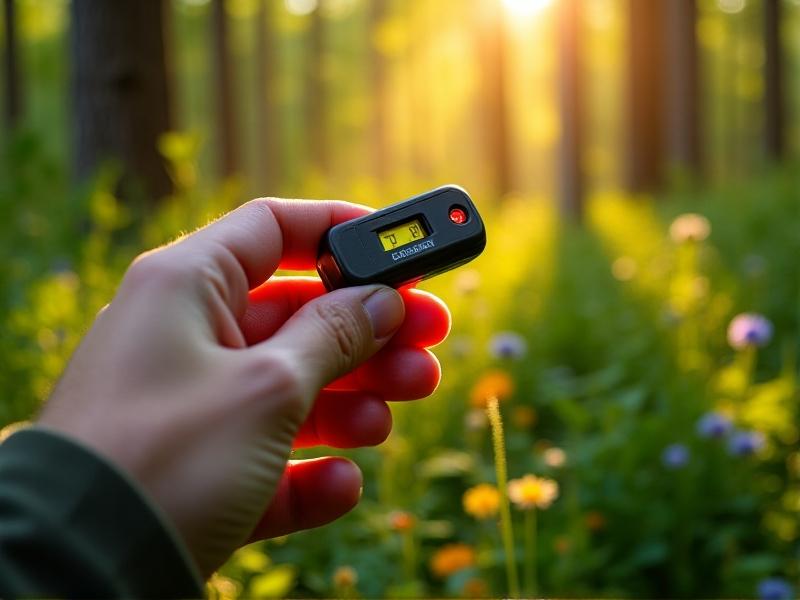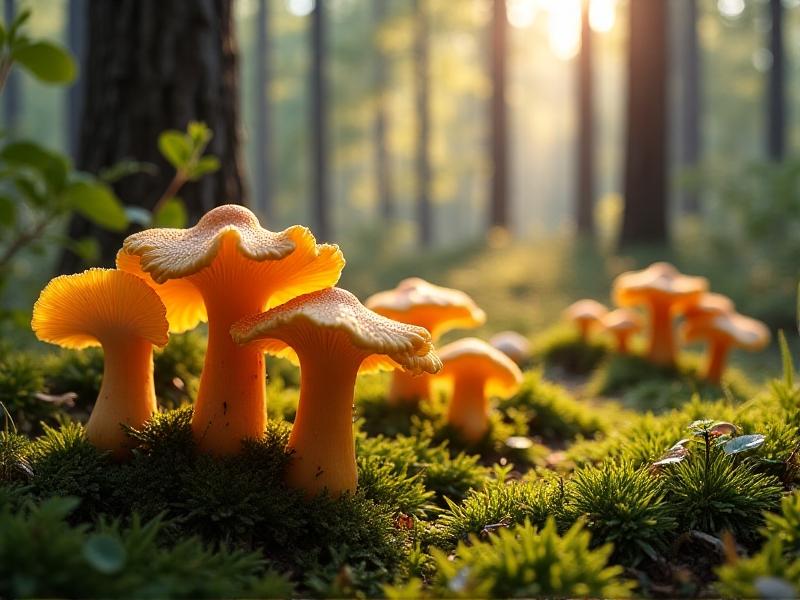Analyzing Soil Health Data for Safe Hyperlocal Foraging Practices
Understanding Soil Health: The Foundation of Safe Foraging
Soil health is the cornerstone of any successful foraging practice. It determines the quality of the plants that grow, the nutrients they absorb, and ultimately, their safety for consumption. Healthy soil is teeming with microorganisms, organic matter, and essential nutrients that support plant growth. Conversely, contaminated or degraded soil can harbor harmful substances like heavy metals, pesticides, and pathogens, posing serious risks to foragers.
To analyze soil health, foragers must consider several key factors: pH levels, nutrient content, organic matter, and the presence of contaminants. Tools like soil testing kits, pH meters, and laboratory analyses can provide valuable insights. Understanding these elements helps foragers identify safe areas for harvesting and avoid potentially hazardous zones.

The Role of Soil Contaminants in Foraging Safety
Soil contaminants are a significant concern for hyperlocal foragers. Common pollutants include heavy metals like lead, arsenic, and cadmium, which can accumulate in plants and pose health risks when consumed. Industrial activities, agricultural runoff, and urban pollution are primary sources of these contaminants.
Foragers must be aware of the history of the land they are exploring. Areas near factories, highways, or former industrial sites are more likely to be contaminated. Soil testing can reveal the presence of harmful substances, but visual cues like discolored soil, poor plant growth, or unusual odors can also serve as warning signs.
Remediation techniques such as phytoremediation, where specific plants are used to absorb and remove contaminants, can improve soil health over time. However, foragers should exercise caution and avoid harvesting from areas with known contamination until thorough testing and remediation have been completed.

Nutrient-Rich Soil: A Forager's Best Friend
Nutrient-rich soil is essential for growing healthy, edible plants. Key nutrients like nitrogen, phosphorus, and potassium support plant growth, while micronutrients like zinc and iron contribute to their nutritional value. Foragers should seek out areas with fertile soil, as these are more likely to yield abundant and nutritious harvests.
Composting, crop rotation, and the use of organic fertilizers can enhance soil fertility. Observing the diversity of plant life in an area can also indicate soil health. A variety of thriving plants suggests a balanced ecosystem with rich, nutrient-dense soil.
Foragers can also look for specific indicators of nutrient-rich soil, such as the presence of earthworms, which are a sign of healthy, organic matter-rich soil. By focusing on nutrient-rich areas, foragers can ensure they are harvesting plants that are not only safe but also packed with essential vitamins and minerals.

pH Levels and Their Impact on Foraging
Soil pH is a critical factor in determining which plants can thrive in a given area. Most edible plants prefer slightly acidic to neutral soil, with a pH range of 6.0 to 7.0. However, some plants, like blueberries, thrive in more acidic soil, while others, like asparagus, prefer slightly alkaline conditions.
Foragers should test the pH of the soil in their foraging areas to understand what types of plants are likely to grow there. Soil pH can be adjusted using amendments like lime to raise pH or sulfur to lower it, but these changes take time and should be approached with caution in natural foraging areas.
Understanding soil pH also helps foragers identify potential risks. For example, highly acidic soil can increase the availability of certain heavy metals, making them more likely to be absorbed by plants. By monitoring pH levels, foragers can make informed decisions about where and what to harvest.
Organic Matter: The Lifeblood of Healthy Soil
Organic matter is a key component of healthy soil, providing essential nutrients and improving soil structure. It includes decomposed plant and animal material, such as leaves, compost, and manure. High levels of organic matter enhance soil fertility, water retention, and microbial activity, all of which contribute to the growth of healthy, edible plants.
Foragers should look for areas with abundant organic matter, such as forest floors, meadows, and gardens. These areas are more likely to support a diverse range of edible plants. Observing the presence of decomposing leaves, fungi, and other organic material can indicate rich, fertile soil.
Adding organic matter to foraging areas, such as through composting or mulching, can improve soil health over time. However, foragers should avoid introducing non-native materials or contaminants that could disrupt the natural ecosystem. By focusing on areas with high organic matter, foragers can ensure they are harvesting from nutrient-rich, healthy soil.
Microbial Activity: The Hidden Heroes of Soil Health
Microbial activity is a vital but often overlooked aspect of soil health. Microorganisms like bacteria, fungi, and protozoa play a crucial role in breaking down organic matter, cycling nutrients, and supporting plant growth. Healthy soil is teeming with microbial life, which contributes to the overall fertility and resilience of the ecosystem.
Foragers can assess microbial activity by observing the soil's texture, smell, and the presence of decomposing material. A crumbly, earthy-smelling soil with visible fungi and bacteria is a good sign of high microbial activity. These microorganisms help plants absorb nutrients and protect them from diseases, making them essential for safe and successful foraging.
Encouraging microbial activity in foraging areas can be achieved through practices like composting, reducing soil disturbance, and avoiding chemical inputs. By fostering a healthy microbial community, foragers can support the growth of robust, nutrient-dense plants that are safe to harvest.
Foraging in Urban Environments: Unique Challenges and Solutions
Urban foraging presents unique challenges due to the higher likelihood of soil contamination from pollution, pesticides, and industrial activities. However, with careful planning and testing, urban foragers can still find safe and nutritious plants in city environments.
Foragers should focus on areas with less traffic and pollution, such as community gardens, parks, and green roofs. Testing the soil for contaminants is especially important in urban settings, where the risk of exposure to harmful substances is greater. Remediation techniques like raised beds and container gardening can also help mitigate soil contamination.
Urban foragers should also be aware of local regulations and property boundaries to avoid legal issues. By taking these precautions, urban foragers can enjoy the benefits of hyperlocal foraging while minimizing the risks associated with urban soil health.
Tools and Techniques for Analyzing Soil Health
Analyzing soil health requires the right tools and techniques. Soil testing kits, pH meters, and laboratory analyses are essential for assessing key factors like nutrient content, pH levels, and contaminants. Foragers should also consider visual and tactile assessments, such as observing plant health, soil texture, and the presence of earthworms.
Mobile apps and online resources can provide additional support, offering guides on soil health, plant identification, and contamination risks. Foragers should also keep detailed records of their findings to track changes in soil health over time and make informed decisions about where to harvest.
Investing in quality tools and staying informed about soil health best practices can enhance the safety and success of hyperlocal foraging. By combining scientific analysis with hands-on observation, foragers can ensure they are harvesting from healthy, nutrient-rich soil.
Building a Community of Safe Foragers
Foraging is not just an individual practice; it can also be a community effort. Building a network of like-minded foragers allows for the sharing of knowledge, resources, and experiences. Community groups can organize soil testing events, foraging workshops, and educational campaigns to promote safe and sustainable foraging practices.
Collaborating with local environmental organizations, universities, and government agencies can also provide valuable support and resources. These partnerships can help foragers access soil health data, participate in remediation projects, and advocate for policies that protect foraging areas.
By working together, foragers can create a safer, more sustainable foraging community. Sharing knowledge and resources not only enhances individual foraging practices but also contributes to the overall health of the environment and the well-being of the community.







